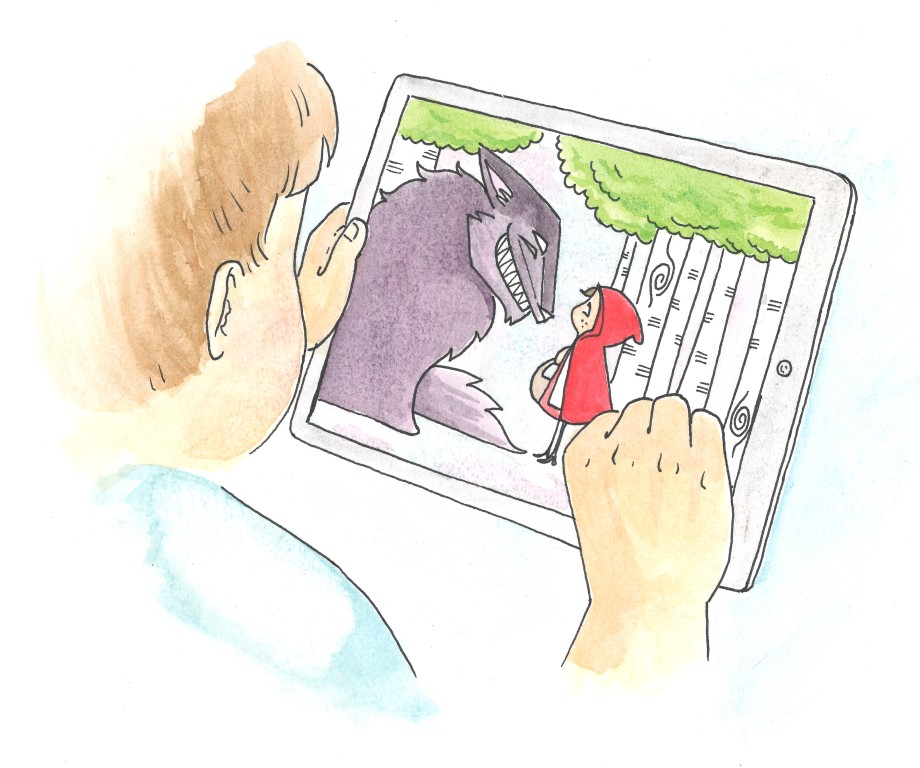To read books together with young children is a common activity – both in early childhood settings and at home. Many children are increasingly using digital books to access stories. You might wonder whether reading on paper and on screen is the same? Does it matter whether children turn pages in a book or swipe pages on an iPad?
Given the increased use of technologies by young children worldwide, it is important to know how reading on screen compares to reading on paper. Hence, we have compared children’s reading on paper and on screen in relation to effects on children’s vocabulary learning and story comprehension.
This FILIORUM resource draws on the results from the research article A comparison of children's reading on paper versus screen: A meta-analysis by May Irene Furenes, Natalia Kucirkova and Adriana G. Bus (2021).
The video presents examples of high- and low-quality design of children’s digital books. The books’ design has a significant impact on children's story comprehension.

An illustration of a design in a digital picture book about the Little Red Riding Hood that supports children's story comprehension.
Illustrated by Tilde Hoel Torkildsen
Aim: By using this resource, teachers/practitioners will learn about the differences between high- and low-quality designs of digital picture books for children. Useful for: Teachers and practitioners in early years, e.g. at a staff meeting. Recommended time use: 30 minutes. Tips for using this resource: 1. Watch the video. 2. Discuss the reflection questions, for example in groups with other colleagues. 3. Evaluate and discuss the design of a digital picture book (see Activity). 4. Share your experiences with each other at the next staff meeting.
Questions for reflection
- What are your experiences of reading digital books with young children?
- What are your concerns about children’s reading on screen?
Printable version of the resource
Evaluate and discuss the design of a digital picture book, for example by using the VEBB Tool. This tool helps teachers reflect on the value of a digital book for classroom dialogue.
Check out the tips for teachers, guidance and research summaries available from www.childrensdigitalbooks.com/practice.
Early childhood research from FILIORUM
This FILIORUM resource draws on the results from the following research article:
Furenes, M.I., Kucirkova, N. & A. G. Bus, A.G. (2021). A comparison of children's reading on paper versus screen: A meta-analysis. Review of Educational Research 91(4), 483–517. https://doi.org/10.3102/0034654321998074
Aim
To compare children’s reading on paper and on screen in relation to effects on children’s vocabulary learning and story comprehension
Research question
- Do children learn more from reading on paper or on screen?
Methods
Meta-analysis
Data material
39 studies of previously published data comparing the two types of media.
Central findings
Without the right enhancements, digital books are inferior to print versions and could in fact interfere with children’s understanding of the narrative. The distracting nature of some digital books and enhancements that are not aligned with the storyline, impede children's story comprehension.
However, with the right enhancements, digital books can outperform print books. Enhancements such as prompting children's background knowledge to understand the story boost children's story comprehension.
It is therefore important to carefully consider the design of the digital book that you want to read with the children - both in early childhood settings and at home. Even a small addition can make a difference to how children enjoy the book and how much they learn from it.
Thus, adding specific features to children's digital books needs to be carefully considered by their creators and users. As researchers, we recommend that designers carefully consider additional features in the digital books they develop.
Children's digital books - a webpage with relevant tips, guidance and research summaries for practitioners and designers of children's digital books.
How and Why to Read and Create Children's Digital Books - a freely accessible book with tips for teachers on how to use digital books in classrooms, written by N. Kucirkova.
PROOF POINTS: Paper beats pixels on most picture books, research finds - a summary article about the difference of digital and print reading, written by J. Barshay (March 2021)
Children’s reading on screen: in the beginning was the word, not a hotspot - an article summarising the potential of children's e-books, written by N. Kucirkova (Desember 2017)
Confused By the Mysterious World of Children's Digital Books? - a summary article on the status of research in children's digital books in 2016, written by N. Kucirkova (July 2016)

Corresponding authors
Norwegian Centre for Learning Environment and Behavioral Research in Education
Knowledge Centre for Education
National Centre for Reading Education and Research


